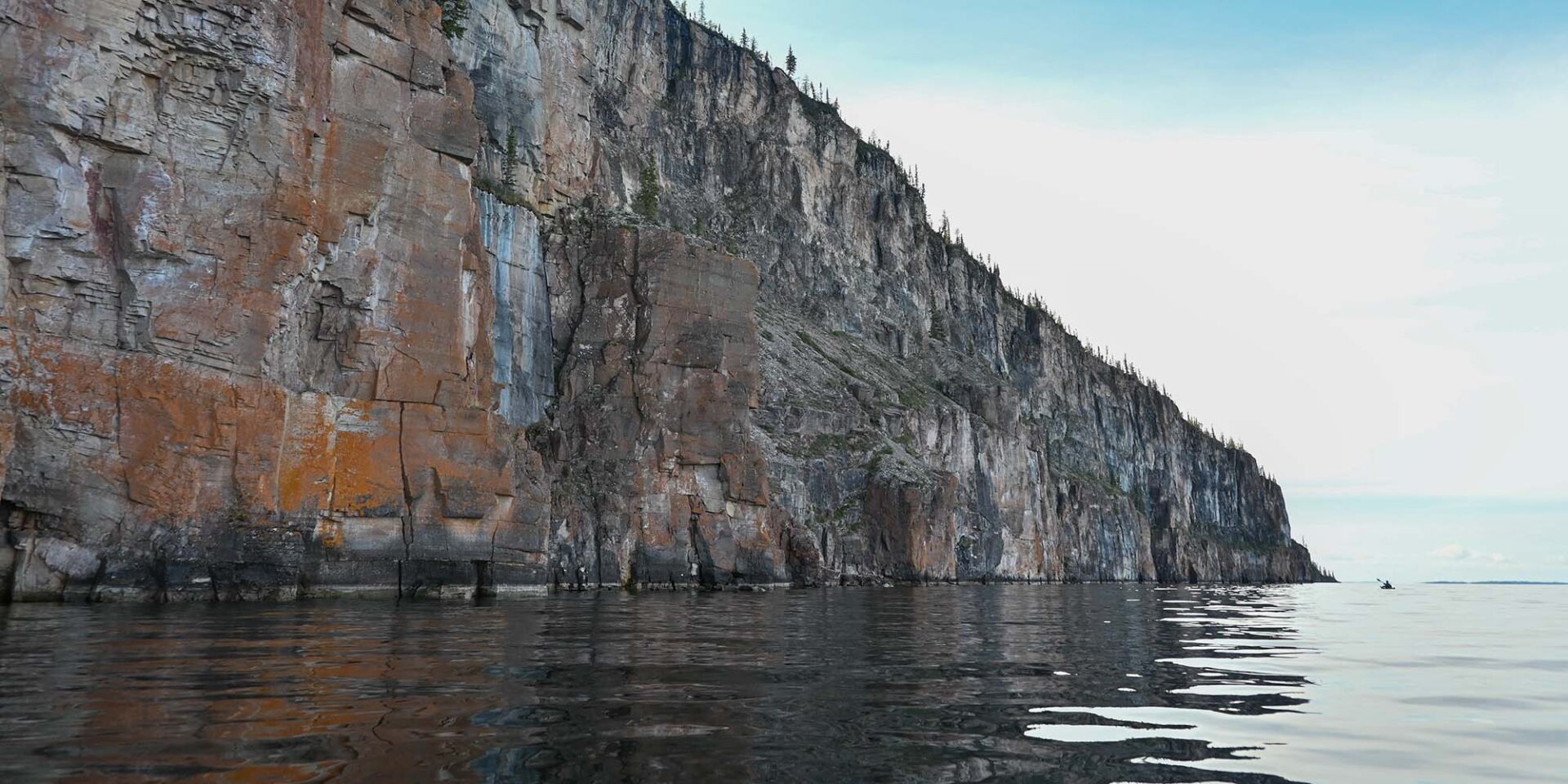
Photos from Amber Champion, Brenda Haddow, and Jim Everard
There is a moment at the start of any wilderness trip when you “shed” the familiar and tangible life you know, for the mystery and majesty of a new playground you are about to explore.
Such was the feeling as the Twin Otter float plane circled the southern tip of Etthen Island on the East Arm of Great Slave Lake.
The 45-minute flight from Yellowknife, NWT offered a stunning view of the landscape below, and helped our group realize that we were about to sea kayak on the 10th largest lake in the world.

The East Arm of Great Slave Lake is a unique section of the 27,200 square kms (10,500 square miles) lake that boasts a scattering of rocky islands, the newly established Thaidene Nene National Park, and the Dene First Nation community of Lutselk’e, with a population of approximately 350 people.
Once the float plane left us on the southern tip of Etthen Island, we were immediately aware of the quiet solitude we all had hoped to find in the Northwest Territories.
My companions, which included eight adventurous tourists and Taylor, my co-guide, had come together for a 9-day, guided kayak trip on Great Slave Lake.
As trip guides, it was our job to lead, instruct, prepare meals, and protect our guests from the inherent risks while they immersed themselves in an area of northern Canada that very few ever have the privilege to visit.
After a series of instructions and demonstrations on how to pack the food, camping gear and personal items into the kayaks, our group accepted the challenge with enthusiasm.
Unlike canoeing, where items are stored in large packs in the bottom of the canoe, everything had to be taken apart or made small enough to fit into the small spaces inside the kayaks’ storage compartments.
After an hour of steady work, even the “rookies” who had more limited kayaking experience had successfully loaded their boat down to the last plum, sleeping bag and bulb of garlic.

We enjoyed a delicious, picnic-style shore lunch of fresh fruit and veggies, cold cuts, assorted cheeses, hummus, bagels, croissants, and brownies for dessert, then we gingerly launched our kayaks into the water for a skills clinic.
Although most of our guests had kayaking experience, a few were novice paddlers. We started our kayak instruction with the basics: How to safely get in and out of a kayak, how to hold a paddle, etc. and ended with a series of kayak strokes to effectively move the kayak in different ways and situations.
When our first kayak lesson was completed, we paddled along the eastern shoreline in the direction of our first planned campsite. The weather and lake conditions were near perfect.
There was a gentle breeze, and the sky was postcard blue with no hint of clouds in any direction.
During the first day we paddled close enough to shore to allow new paddlers to build their confidence and everyone the opportunity to see wildlife.
By the time we reached our first campsite, we had seen one American Bald Eagle, three Common Loons, and an uncounted number of Common Ravens.
It was a great start and a lucky omen for the adventures that lay ahead.
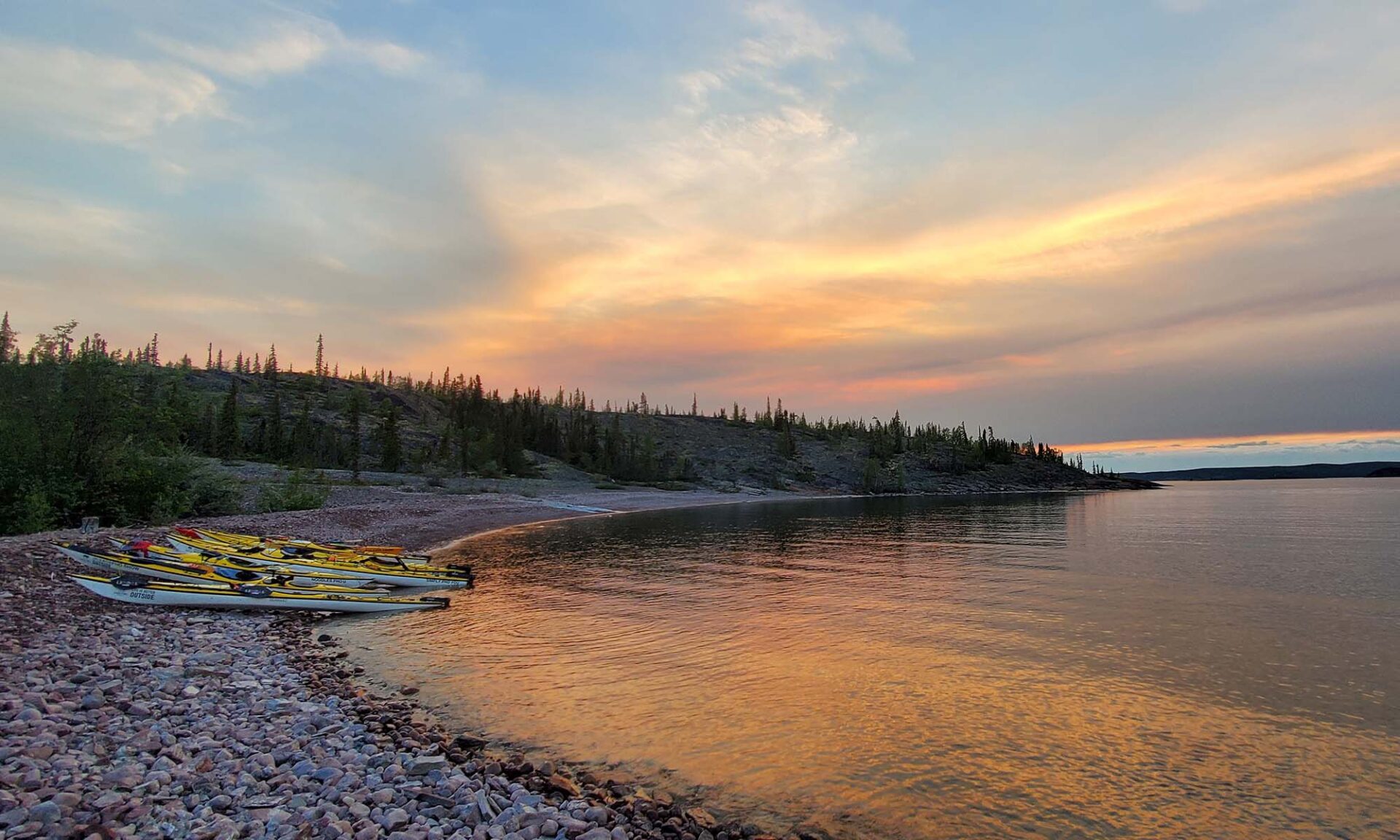
That first night, Taylor and I did our best to alleviate any fears from our guests that this was going to be a trip for losing weight because the food was rationed or boring.
After the tents were up, our group members settled into their folding camp chairs and enjoyed a glass of wine with appetizers while we prepared a dinner fit for kings and queens.
The daylight hours are still very long on the East Arm of Great Slave Lake in early August.
The sun in this part of the Northwest Territories doesn’t set until after 10:00 PM, giving more than 17 hours of daylight.
On the first night, with the excitement from being in new surroundings, almost everyone stayed up long enough to witness the sunset as the western horizon transformed from faded blue to a deep orange blush, promising that we would wake to a beautiful day the next morning.

The second day started with sunshine, blue sky, and the singing voices of a handful of songbirds such as Chipping Sparrows and Red-eyed Vireos living among the small clusters of spruce and willow that fight to find a foothold in the rocky soil.
After a breakfast of fresh fruit, granola, and bacon and eggs with toast, our group sauntered off to slip into their protective “dry suits” for a second day of paddling on the water.
As you might expect of a lake located north of the 60th parallel, Great Slave Lake is not a destination for recreational swimming.
The deepest recorded section of the lake is 614 meters (2,014 feet) and the average depth is 41 meters (135 feet) meaning that paddlers exploring the lake typically wear “wet” or “dry” suits to protect them from the frigid water.
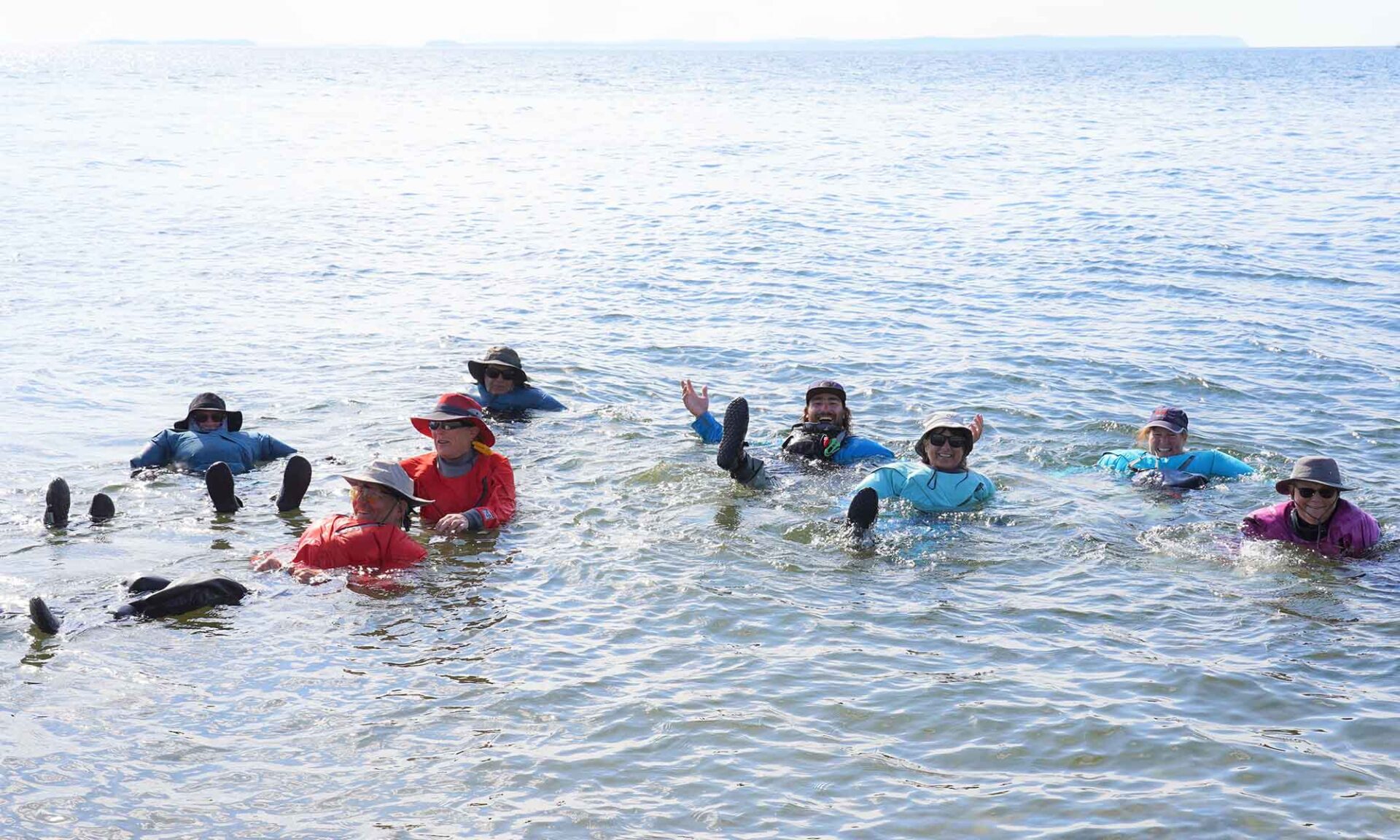
When everyone was dressed and in their boats our flotilla continued its paddle northward up the eastern side of Etthen Island.
In this section of the island the shoreline is guarded with willow, alder, and various sized rocks with a gentle slope.
However, as the kilometers passed beneath our boats the shoreline slowly revealed more diversity in character including sand beaches, small rock cliffs and expansive bays guarded by small, vegetated islands.
Later in the afternoon, the shoreline changed dramatically with rock walls in the distance fronted by a sloping barricade of loose rocks and boulders.
In time, this too changed, and we gleefully hugged the shore beside jagged rock cliffs that rose upward ten meters above the water.
The granite rock was covered in a variety of lichens, including great horned lichen. The most pronounced was the bright orange elegant sunburst lichen most likely feeding off the nitrogen that roosting birds had left behind.
We made camp on a treeless, rocky point that offered easy access to stand on dry land and unloaded our kayaks.
Some of the group, familiar with the eastern shore of Lake Huron’s Georgian Bay, in Ontario, remarked with surprise how similar the sites’ polished bare rock looked.
That same evening over hot drinks, we watched in awe as the setting sun’s rays illuminated the towering rock wall on Red Cliff Island, ten kilometers away.
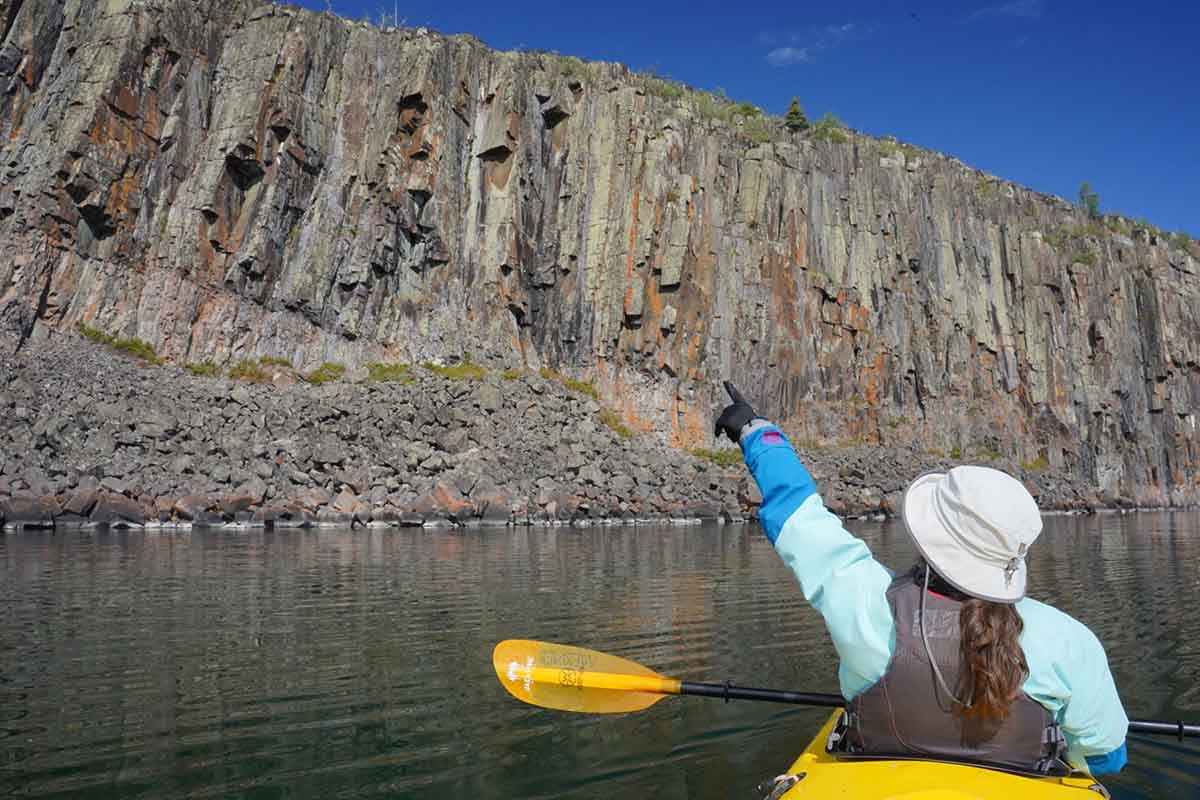
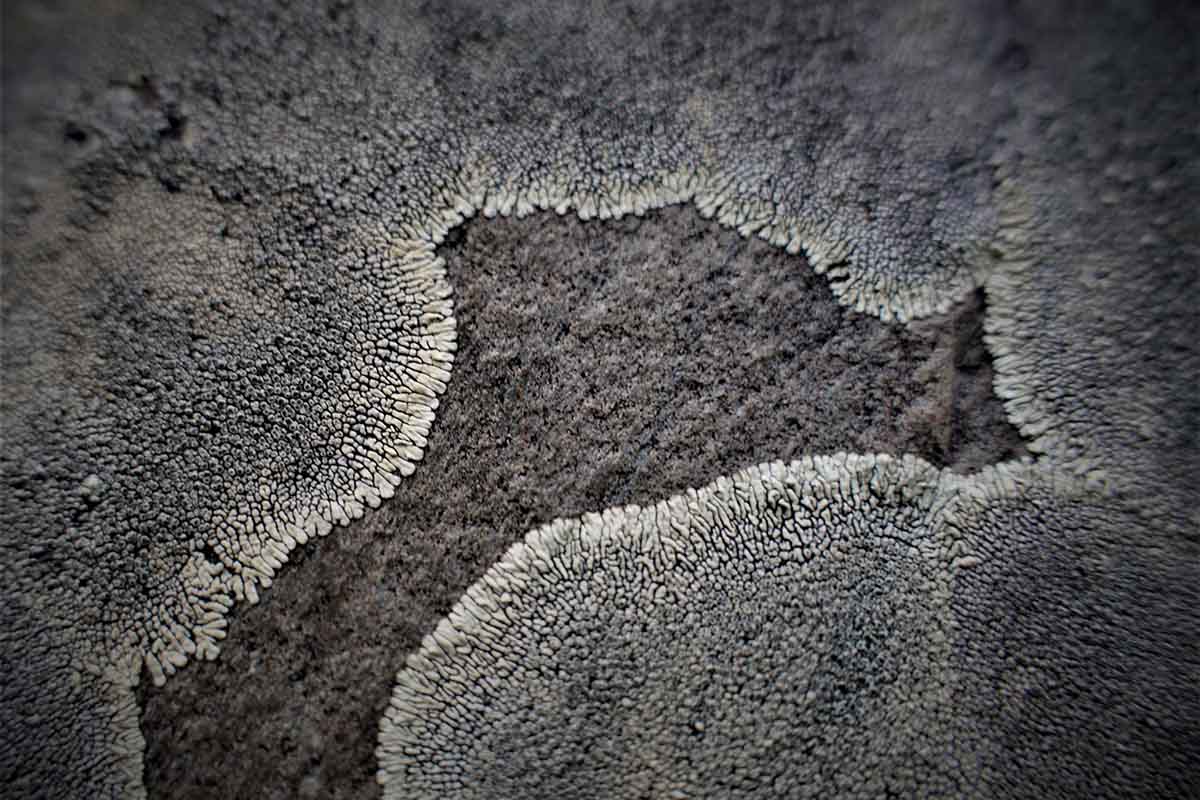
The next few days were a montage of similar geographic scenes, punctuated by the sighting of a lone American black bear walking on a section of sand beach as we safely paddled past.
Day 4 of the trip was also the first day that some of our guests pulled out their fishing rods in hopes of catching a lake trout.
Great Slave Lake is famous for it’s lake trout fishing and although it wasn’t anyone’s first priority, the thought of catching and eating fresh fish was a popular trip goal.
To ensure the fish population isn’t harmed from recreational fishing, the Northwest Territories government has established fishing regulations limiting the number of fish you can keep and forcing anglers to use barbless fishhooks.
This unique rule helps reduce injuries to fish when they are caught and released back into the lake.
Regardless of the regulations, fishing on the East Arm of Great Slave Lake is quite easy, and even the most self-proclaimed “unlucky” fisherman tends to catch fish.
In our case, everyone who wanted to fish, caught something the first day they tried fishing from shore, and we enjoyed fresh lake trout and grayling for dinner on three separate days, serving it pan fried, grilled, and deep fried in a light, crispy batter with fresh lemon.

To say the scenery around Etthen Island on the East Arm of Great Slave Lake is beautiful is an understatement.
The water is crystal clear, the shoreline is mostly untouched by human traffic, and the sections of rock cliffs are equally inspiring, humbling, and, if the weather is not favourable, truly daunting.
Personally, my favourite section of cliffs is a two kilometer stretch on the northwest section of the island.
Higher than anything on the east side of the island, this wall of rock rises twenty to thirty metres out of the water and dwarfs everything in it’s shadow.
It’s not easy to get close to this wall of rock by kayak because it’s often being battered by prevailing winds and waves.
Our group did get the opportunity to hike and scramble to the top of the cliff from our nearby campsite.
Standing at the peak, the view of the surrounding area below was a stunning mosaic of various shades of green, grey, and blue in all directions.
A perfect “bird’s eye” view of the East Arm region, inspiring future visits to circumnavigate other
neighboring islands in Thaidene Nene National Park.
The west side of Etthen Island seemed to offer more scenic grandeur and wildlife.
Although we only saw one more American black bear, our Bald Eagle count soared to six and we saw moose and wolf tracks in the sand on two separate occasions.
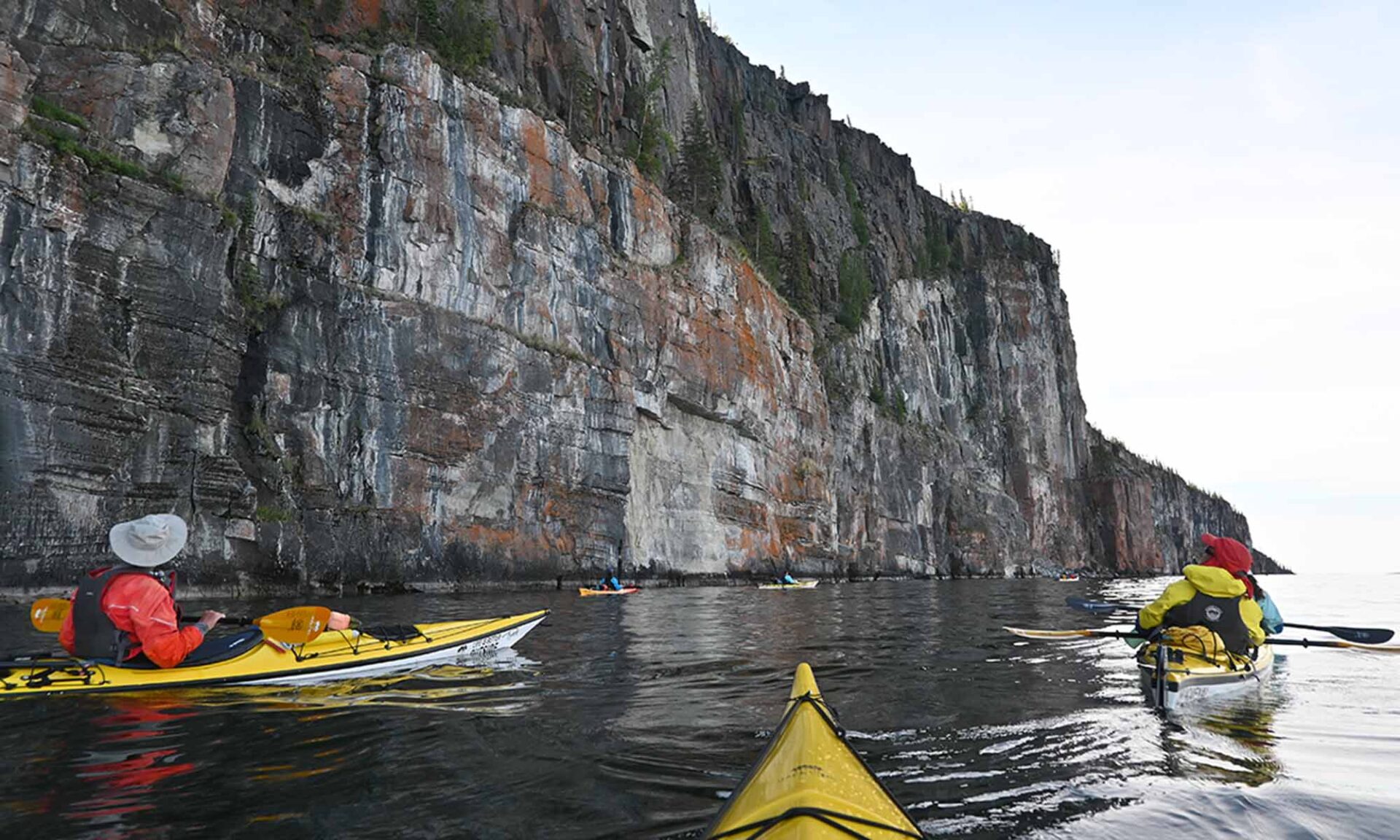
Of course, one cannot go to the Northwest Territories and not talk about the northern lights.
While it is better in late August and and September to witness this natural phenomenon, you have a chance even in early to mid-August if you stay up late enough for the sky to get dark.
Our moment came on the second last night of our trip.
A group of us were sitting on the beach watching the sun set and the sky bleed red until we were eventually swallowed in darkness.
It was some time after 11:00 PM when we saw the first signs.
Thin, white trails of colour, like drifting smoke began to move into view.
In time, the white strands grew to become bands of shimmering white light that changed to fluorescent green as it moved and danced across the sky.

At the end of the trip, it was impossible to pick out one thing that made the experience truly memorable.
Was it the solitude of the land?
The remarkable lake trout and grayling we caught and ate fresh from the water?
Was it the scenery, untouched by man’s hand?
Or was it the glamorous show of northern lights?
In the end, I will recall the trip fondly, and simply say it was spectacular!